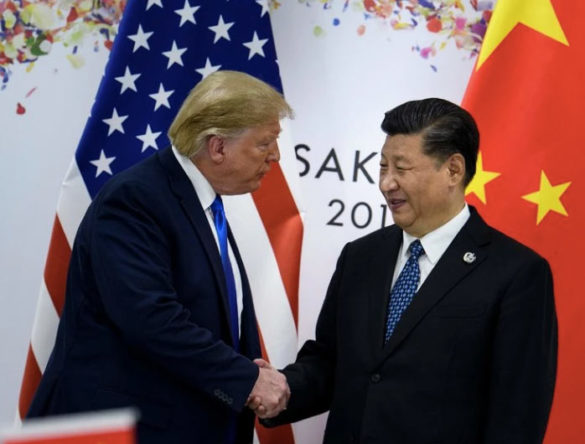
China trade talks continue in October
CHINA TRADE TALKS CONTINUE IN OCTOBER: Top trade officials from the U.S. and China will meet in early October to resume face-to-face talks, China’s Ministry of Commerce announced. A spokesman for U.S. Trade Representative Robert Lighthizer said the meeting would take place in the coming weeks but added that deputy-level officials will meet in mid-September “to lay groundwork for meaningful progress.”
Officials haven’t met in person since Lighthizer and Treasury Secretary Steven Mnuchin returned from a brief meeting in Shanghai in July where little progress was made. Since then, President Donald Trump has lashed out against Beijing, deciding to hit almost all remaining Chinese imports with tariffs and has since decided to increase tariffs after Beijing announced retaliation.
The two sides announced the meeting after Lighthizer and Mnuchin spoke over the phone Wednesday night with Chinese Vice Premier Liu He, Commerce Minister Zhong Shan, People’s Bank of China Governor Wang Yi and Deputy Director of the National Development and Reform Commission Ning Jizhen.
CHINA ESCALATION OPTIONS ON THE TABLE: Even with a meeting now on the calendar, Trump made clear Wednesday he is holding out for a “real deal” with China, and at least one of his outside advisers says there are more ways to escalate the trade fight if Beijing is unwilling to meet U.S. demands.
“We’re at very low levels of pressure compared to what could be done,” said Michael Pillsbury, an outside adviser to Trump on China and senior fellow at the Hudson Institute.
That could include more targeted measures, such as eliminating waivers that allow Chinese companies listed on U.S. stock exchanges to bypass auditing and financial disclosure requirements required for American firms. This could cause a potential delisting of major Chinese companies like Alibaba and Tencent in an effort to pressure Beijing, Pillsbury told Morning Trade.
“Steps that would inflict pain on China’s national champion companies might bring them around to a binding deal,” Pillsbury said. There are 159 Chinese firms listed on U.S. stock exchanges, representing a total market capitalization of $1.1 trillion, according to the U.S.-China Economic and Security Review Commission.
Trump’s China calculation: The president contended on Wednesday that the stock market would be 10,000 points higher if he didn’t pursue the fight against China. “To me, this is much more important than the economy. Somebody had to do this,” Trump told reporters in the Oval Office.
But it’s unclear how much farther Trump will go if the U.S. economy reacts poorly to an escalation of the trade fight ahead of the 2020 election. It’s also questionable what electoral benefit a deal with China would have for Trump. Pillsbury said a deal could be achievable if China were to come to talks ready to accept language it rejected in May that would force Beijing to enshrine into its law commitments to protect intellectual property and end policies that force U.S. companies to hand over valuable technology.
But other observers say that’s unlikely to happen. “Trump could cry uncle at any time,” said one source close to the talks. “But if he’s going to take a deal at this point, it’s probably going to be pretty weak.”
China digging in: Beijing has indicated through a series of measures in recent weeks that it is preparing to weather a long-term trade storm. Chinese President Xi Jinping released new strategies last week to bolster the country’s manufacturing capabilities, just days after Trump called on U.S. companies to leave China. China’s State Council, the government’s top administrative authority, also unveiled a set of measures last week to boost domestic consumption.